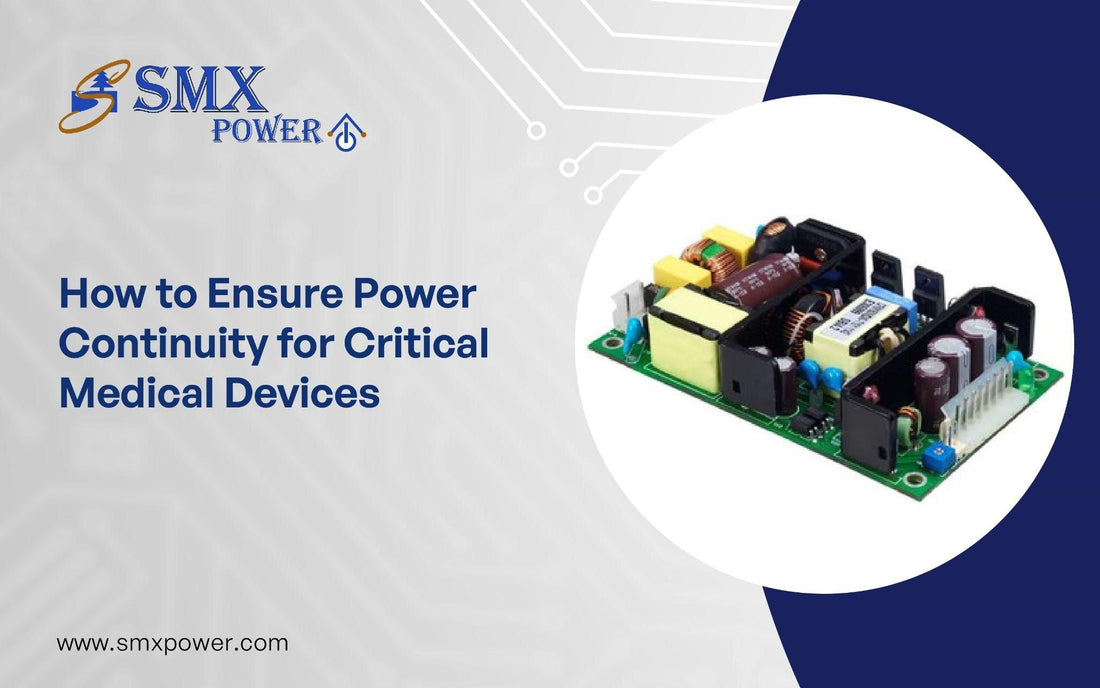Do you work in an intensive care unit in a hospital?
Then you might be aware that the ventilator, heart monitor, and other machines are functioning continuously to keep patients’ health stable. Now, imagine a sudden power failure occurs, and everything goes dark.
You feel panicked in this scenario. Right?
However, this issue is preventable if you have implemented a fail-safe system. It will ensure the smooth functioning of your critical medical devices.
Here’s a brief guide to maintain power continuity for life-saving machines.
Why is the power supply important for medical devices?
Modern medical systems equipped with innovative technologies rely on seamless power supply systems. Many critical medical devices need low-voltage DC power, although they are connected to AC grids. That is why you need to use AC/DC medical power supplies for those devices.
The best power supply system ensures that your medical devices receive the right amount of current and voltage to work properly. Power fluctuations will prevent those devices from working smoothly. As a result, patients will not receive effective treatments, and doctors may not be able to obtain accurate diagnostic information.
So, you should have reliable power solutions to avoid these problems in your medical facility. Even during voltage instability and power outage, your devices will work continuously.
Assess power vulnerability in your hospital
The most important step for maintaining power continuity for your medical devices is to make a rigorous assessment. It helps you detect vulnerabilities in the existing power supply chain. So, you need to-
- Evaluate the electrical infrastructure
- Find potential risks of failure
- Understand energy usage patterns in your hospital
These are some ways to conduct risk analysis and determine the risk of power disruptions. Before doing analysis, you have to map out critical systems, which need consistent power. Your hospital should create a customized contingency plan to avoid external and internal threats (like natural disasters and equipment failure).
Different power continuity solutions for your medical devices
Buy AC/DC medical-grade power converters
Most hospitals use AC mains power, but healthcare devices need low-voltage DC power for proper functioning. A medical-grade AC/DC converter maintains isolation between output and input to ensure patient safety. It also converts AC to stable DC voltage. The best AC/DC power converters also ensure protection against overvoltage and overcurrent.
Install an uninterrupted power supply system
Uninterrupted power supply products are significant backup power systems designed to provide consistent power to medical devices during a power outage. These systems have capacitors or batteries, which sustain power temporarily to keep essential equipment functioning.
So, you need to install uninterrupted power supply systems to allow a smooth transition to backup power. Such devices will also save you from equipment damage and data loss.
Stand-by power supply devices are best for non-critical devices when the electric supply fails. But, lifesaving medical devices need more advanced power supply systems. The best devices maintain a balance between cost and performance to protect your medical equipment from power fluctuations.
Maintain your power supply systems for peak performance
The most crucial step is to test and maintain your power supply systems. Scheduled maintenance involves inspecting and testing every component of the power system. The proactive approach allows you to rectify potential problems before they cause sudden failures. It ensures power systems will perform at the optimal level and ensure patients’ safety.
Need to buy medical power supply devices?
At SMX Power, we provide premium-quality, medical-grade power supplies that meet the needs of critical healthcare applications. Our products ensure safety and deliver the best performance.
Contact us for the right power solutions for your medical devices and keep your patients’ health safe.

